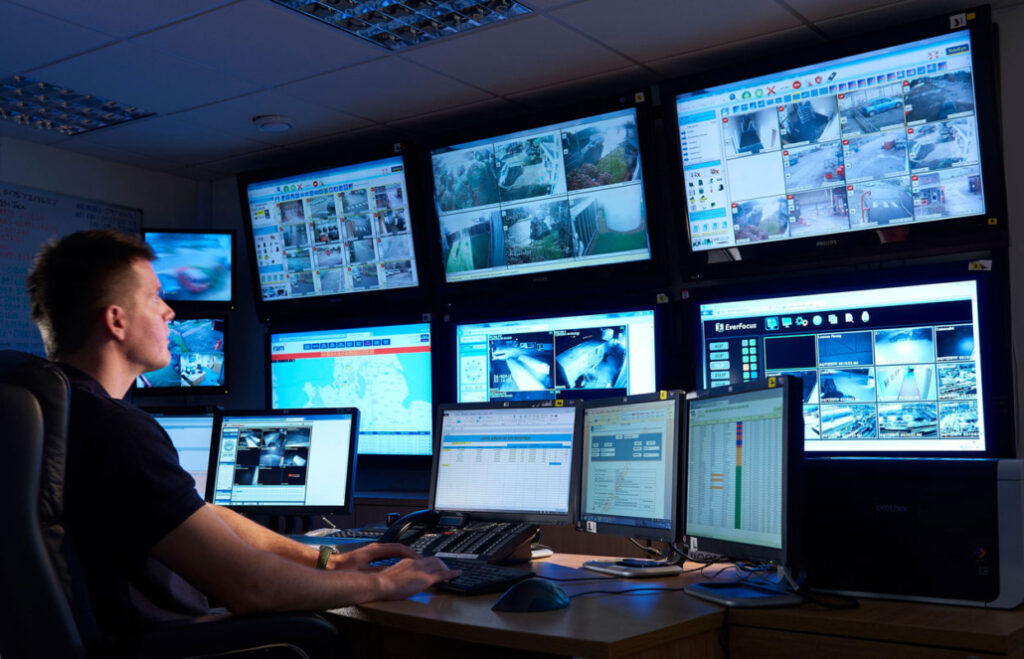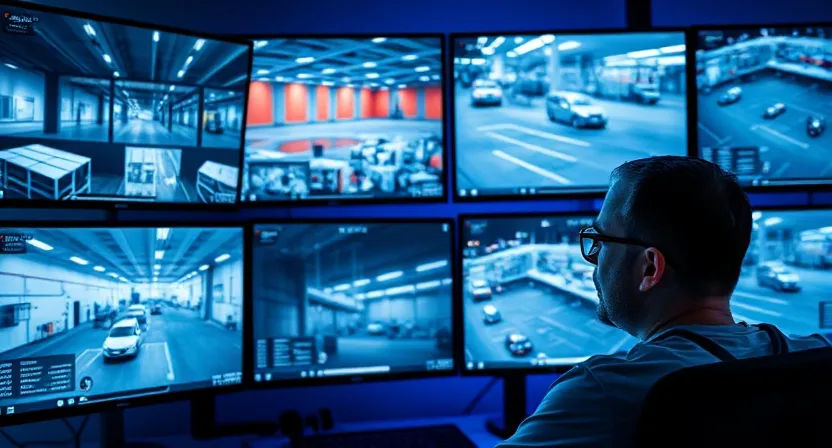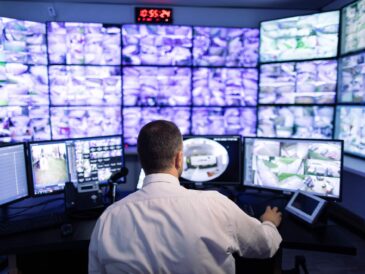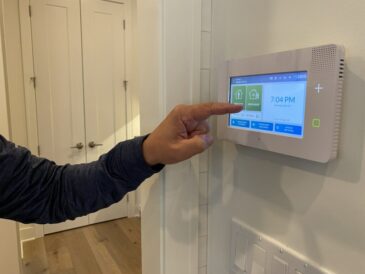The Importance of Security in High-Risk Areas
In today’s world, security has become a paramount concern, especially in high-risk areas. These locations often experience higher crime rates, making the need for effective security measures more critical than ever. Monitored security systems offer a robust solution to safeguard properties, businesses, and individuals in these vulnerable regions.
High-risk areas can include urban centres with elevated crime statistics, industrial zones prone to theft, and even residential neighbourhoods facing increased burglary rates. The implementation of monitored security systems not only deters potential criminals but also provides peace of mind to residents and business owners alike. Furthermore, the presence of visible security measures can foster a sense of community, encouraging neighbours to look out for one another and report suspicious activities, thereby enhancing overall safety.
Understanding Monitored Security Systems
Monitored security systems typically consist of a combination of surveillance cameras, alarm systems, and professional monitoring services. These components work together to provide comprehensive protection against various threats. When an alarm is triggered, the monitoring service is immediately notified, allowing for swift action to be taken. This rapid response can be crucial in preventing theft or vandalism, as it ensures that law enforcement is alerted without delay, often resulting in the apprehension of suspects before they can escape the scene.
These systems can be tailored to meet the specific needs of different environments. For instance, a retail store may require more cameras and motion sensors than a single-family home. This flexibility makes monitored security an ideal choice for a wide range of high-risk areas. Additionally, many modern systems now incorporate smart technology, allowing users to monitor their premises remotely via smartphones or tablets. This innovation not only enhances convenience but also empowers property owners to remain vigilant, even when they are away. The integration of smart home devices with security systems can further augment safety, as features like automated lighting and smart locks can be programmed to deter intruders and create the illusion of occupancy when residents are not at home.
Benefits of Monitored Security
Investing in monitored security systems yields numerous benefits that extend beyond mere theft prevention. The advantages can significantly enhance safety and security in high-risk areas.
Deterrence of Criminal Activity
One of the most significant benefits of monitored security is its ability to deter criminal activity. The mere presence of security cameras and alarm systems can discourage potential criminals from targeting a property. Studies have shown that properties equipped with visible security measures are less likely to be broken into compared to those without.
In high-risk areas, where crime rates are typically elevated, the deterrent effect of monitored security can be particularly pronounced. Criminals often seek easy targets, and a well-monitored property sends a clear message that security is a priority.
Real-Time Monitoring and Response
Another key advantage of monitored security is the capability for real-time monitoring. Professional monitoring services operate 24/7, ensuring that any suspicious activity is detected immediately. When an alarm is triggered, trained professionals can assess the situation and respond accordingly, whether that means contacting local authorities or alerting property owners.
This rapid response can make a significant difference in high-risk areas, where every second counts. The ability to act quickly can prevent potential losses and minimise damage, providing an invaluable layer of protection.
Choosing the Right Monitored Security System
Selecting the appropriate monitored security system for a high-risk area involves careful consideration of several factors. Each environment has unique characteristics and requirements that must be addressed to ensure optimal protection.
Assessing Security Needs
The first step in choosing a monitored security system is to assess the specific security needs of the area. This includes evaluating the types of threats commonly faced, the layout of the property, and any existing security measures that may already be in place.
For instance, a business located in an area with frequent break-ins may require more extensive coverage, including multiple cameras and motion detectors. Conversely, a residential property may only need basic surveillance and alarm systems. Understanding these needs will guide the selection process and ensure that the chosen system is effective.
Evaluating Technology Options
Modern monitored security systems come equipped with various technological advancements that enhance their effectiveness. Features such as high-definition cameras, smart home integration, and mobile app accessibility can significantly improve security management.
When evaluating technology options, it is essential to consider the specific requirements of the high-risk area. For example, areas with low lighting may benefit from cameras equipped with night vision capabilities. Additionally, systems that allow remote monitoring via smartphones can provide added convenience and peace of mind for property owners.

Cost Considerations
While the benefits of monitored security systems are clear, cost is often a significant consideration for many property owners. Understanding the financial implications can help in making an informed decision. Click here to learn about alarm response security: what happens when your alarm goes off?.
Initial Investment vs Long-Term Savings
Investing in a monitored security system typically involves an initial outlay for equipment and installation. However, this cost should be weighed against the potential long-term savings. Effective security measures can reduce the likelihood of theft, vandalism, and property damage, ultimately saving money in the long run.
Moreover, many insurance providers offer discounts on premiums for properties equipped with monitored security systems. This can further offset the initial investment, making it a financially sound decision for property owners in high-risk areas.
Budget-Friendly Options
For those with limited budgets, there are still options available. Many companies offer tiered pricing structures, allowing property owners to choose a package that fits their financial constraints. Additionally, some systems can be installed as DIY projects, reducing installation costs.
It is crucial to remember that even budget-friendly options can provide significant protection. The key is to ensure that the chosen system meets the basic security needs of the property while remaining within budget.
Integrating Monitored Security with Other Safety Measures
Monitored security systems are most effective when integrated with other safety measures. A multi-faceted approach to security can provide comprehensive protection in high-risk areas.
Physical Security Measures
In addition to monitored security systems, physical security measures such as fencing, gates, and security lighting can enhance overall safety. These measures create additional barriers that deter potential intruders and increase the visibility of the property.
For instance, well-lit areas are less appealing to criminals, making security lighting a valuable addition to monitored systems. Similarly, secure fencing can prevent unauthorised access, complementing the surveillance provided by cameras and alarms.
Community Engagement
Engaging with the local community can also play a significant role in enhancing security in high-risk areas. Neighbourhood watch programmes and community policing initiatives foster a sense of vigilance and cooperation among residents, creating a safer environment for everyone.
By working together, community members can share information about suspicious activities and support one another in maintaining security. This collaborative approach, combined with monitored security systems, can significantly reduce crime rates and increase overall safety.

Conclusion
In conclusion, monitored security systems are an essential investment for properties located in high-risk areas. The combination of deterrence, real-time monitoring, and rapid response capabilities makes these systems invaluable in safeguarding lives and property.
When selecting a monitored security system, it is crucial to assess specific needs, evaluate technology options, and consider budget constraints. Additionally, integrating monitored security with physical measures and community engagement can create a comprehensive safety strategy.
Ultimately, the peace of mind that comes from knowing a property is protected is worth the investment. In high-risk areas, monitored security is not just an option; it is a necessity.




